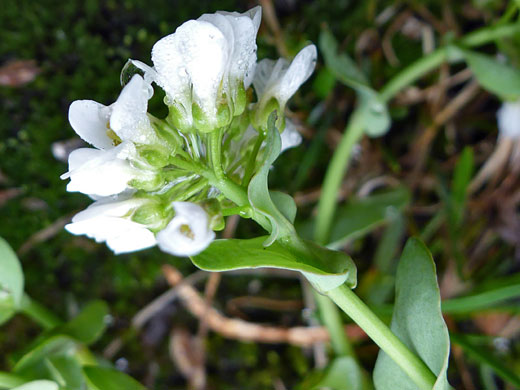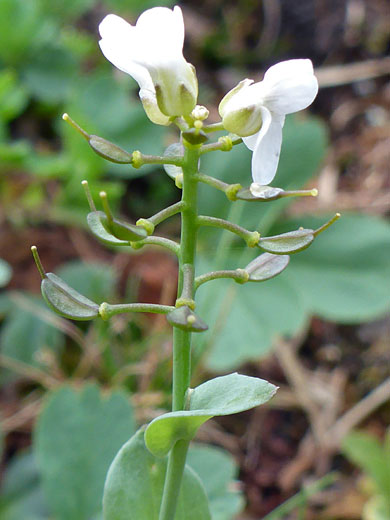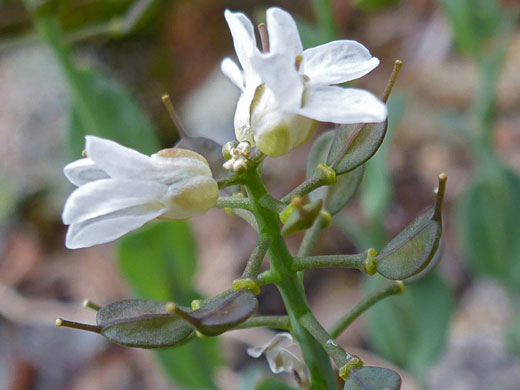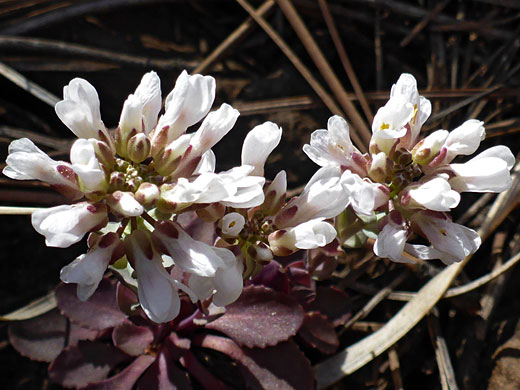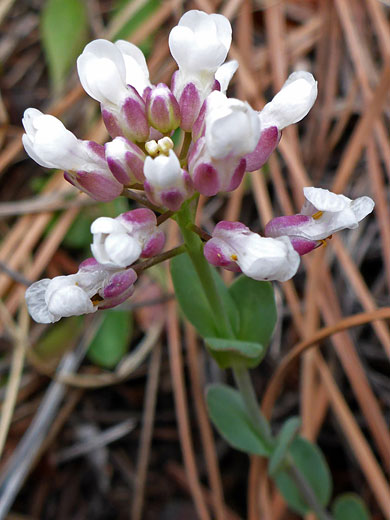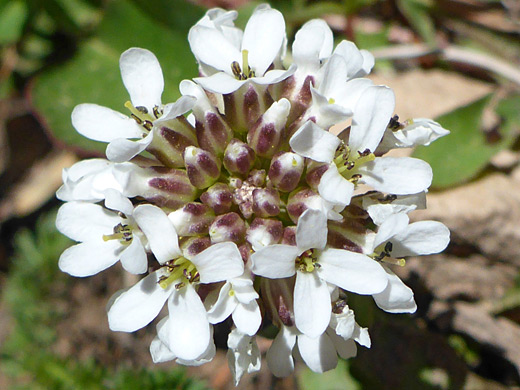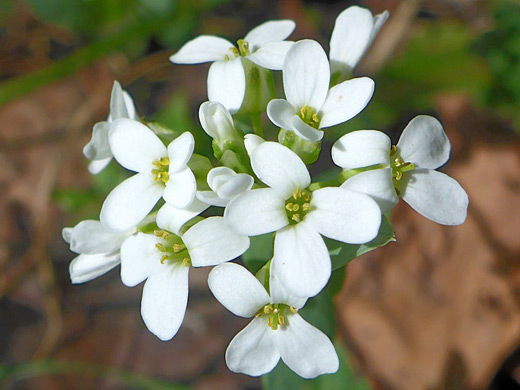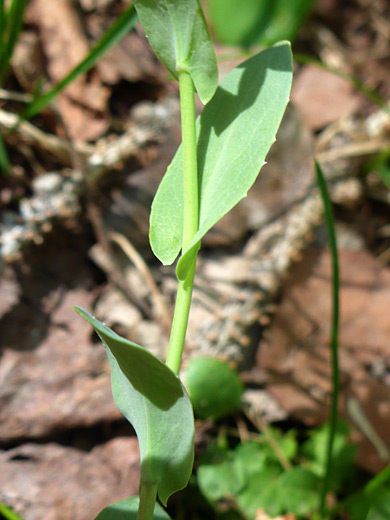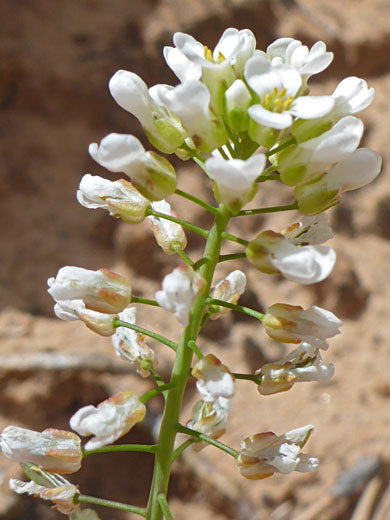Common names:
Alpine pennycress, wild candytuft
Family:
Scientific name:
Noccaea fendleri
Main flower color:
Range:
Most of the Western states; less widespread in California
Height:
Between 1 and 15 inches
Habitat:
Mountainsides, meadows, valleys, woodland; up to 14,400 feet
Leaves:
Hairless, unlobed, linear to oblong to spatulate, up to 3 inches long
Season:
March to August
Noccaea fendleri produces one stem or several, growing upwards or at an angle, branching (if at all) above the middle. Stems vary greatly in height, from just a couple of inches in high Alpine regions to over a foot in sheltered, well-watered canyons. Leaves grow at the base, where they are variously shaped - linear, oblong, spatulate or oblanceolate, and along the stem, where they are more generally ovate, about half as long, and clasping. Leaf margins may be entire or finely toothed.
The inflorescence may be compact and spherical, or elongated, up to 10 inches. The four sepals are oblong, purplish, about a quarter of an inch in length, while the four clawed petals are pure white or sometimes pale pink, up to half an inch long. Petal tips are rounded. When fruiting, the pedicels are spreading or ascending. Fruits are flattened green pods, generally wider above the middle, with pointed tips.
There are five subspecies (californica, idahoensis, siskiyoense, fendleri, glauca), of which the latter is by far the most common; this is identified by its white petals, spatulate basal leaves, and by the dimensions of the petals and leaves.
The inflorescence may be compact and spherical, or elongated, up to 10 inches. The four sepals are oblong, purplish, about a quarter of an inch in length, while the four clawed petals are pure white or sometimes pale pink, up to half an inch long. Petal tips are rounded. When fruiting, the pedicels are spreading or ascending. Fruits are flattened green pods, generally wider above the middle, with pointed tips.
There are five subspecies (californica, idahoensis, siskiyoense, fendleri, glauca), of which the latter is by far the most common; this is identified by its white petals, spatulate basal leaves, and by the dimensions of the petals and leaves.
All Contents © Copyright The American Southwest | Comments and Questions | Contribute | Site Map



